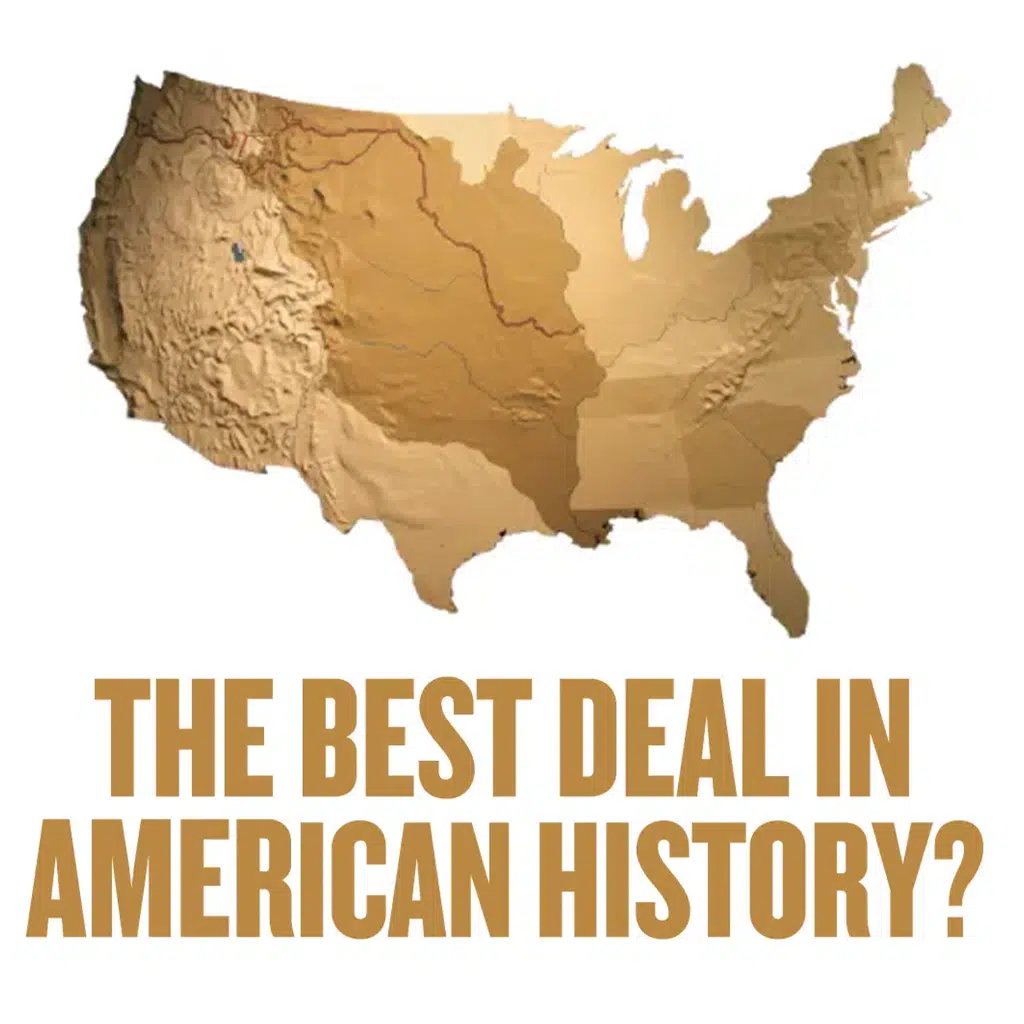Oct 2, 2024
The Best Deal in American History?
What was the best deal in American history? I think it happened in 1803 when Thomas Jefferson negotiated with Napoleon Bonaparte for the U.S. to buy 530,000,000 acres from France, later known as the Louisiana Purchase. The price was $15,000,000, about $417,000,000 in today’s dollars—a historical bargain at $1.27 an acre today and less than $.03 an acre in 1803.
Why Did Napoleon Sell?
Napoleon’s decision to sell the Louisiana Territory was largely influenced by France’s ongoing wars in Europe. Napoleon was engaged in an expensive conflict with Great Britain, and the French Empire needed money. The Louisiana Territory was a vast and underdeveloped region that Napoleon believed would be difficult to defend if war with Britain spread to North America.
He famously said, “I have given England a maritime rival that will sooner or later humble her pride,” suggesting that he saw the U.S. expansion as a way to indirectly challenge Britain’s influence in the Americas.
How Did France Obtain the Louisiana Territory?
Interestingly, France didn’t always own the Louisiana Territory. Spain took formal control of the land in 1762 after the French and Indian War. Then, in 1800, under the secret Treaty of San Ildefonso, Spain ceded the territory back to France.
However, France only held it for a brief three years before deciding to sell it to the U.S. The back-and-forth exchange of land was common in the turbulent colonial world, and few could have predicted that this particular deal would result in one of the most significant land purchases in world history.
What Did Jefferson Initially Want to Buy?
Thomas Jefferson originally set his sights on purchasing only the city of New Orleans and some surrounding areas. New Orleans was of immense strategic importance to the U.S. because it controlled the mouth of the Mississippi River, a vital trade route for American farmers in the Midwest. Access to New Orleans meant controlling the flow of goods from the interior of the continent to international markets.
When Jefferson sent diplomats James Monroe and Robert Livingston to negotiate with France, they were authorized to offer up to $10 million for New Orleans and the Floridas. To their surprise, Napoleon countered with an offer they couldn’t refuse: the entire Louisiana Territory for $15 million. Jefferson’s team, realizing the enormous opportunity, quickly struck the deal, far exceeding their original mandate.
How Many New States Resulted from the Louisiana Purchase?
The scale of the Louisiana Purchase is mind-boggling. From the land acquired, six full states—Arkansas, Iowa, Missouri, Nebraska, Kansas, and Oklahoma—were eventually formed. In addition, the purchase contributed to the formation of parts of nine other states: Louisiana, Minnesota, North Dakota, South Dakota, Montana, Wyoming, Colorado, New Mexico, and Texas. This vast expansion more than doubled the size of the United States, and the land would provide resources, opportunities, and room for westward expansion for decades to come.
How Did the Purchase Impact Native Americans?
While the Louisiana Purchase is often celebrated as a triumph of American diplomacy, it had dire consequences for Native Americans. The U.S. government’s acquisition of the land effectively ignored the fact that numerous Native American nations already inhabited the territory.
As the U.S. expanded westward into this new territory, the government and settlers forced Native Americans off their ancestral lands. The Louisiana Purchase set the stage for a series of treaties, broken agreements, and conflicts that would culminate in the forced relocations of Native Americans, such as the infamous Trail of Tears.
What was the Reaction to the Louisiana Purchase?
The Louisiana Purchase was not universally celebrated at the time. Many Federalists opposed the deal, arguing that the Constitution did not grant the president the authority to acquire new land. Even Jefferson, who was typically a strict constitutionalist, wrestled with the legality of the purchase. In the end, he justified it by reasoning that it was in the country’s best interest.
Despite initial opposition, the purchase became one of Jefferson’s crowning achievements. It secured America’s westward expansion and laid the groundwork for the country to become a continental power.
Is Our Community a Good Deal?
In the real estate industry, opinions about “good and bad deals” are common. For example, according to Altos, the median asking price of a Paradise Valley home is about $5,000,000 ($4,997,000). Is that a good or bad deal? The median rent for a PV home is $15,000/month. Is that a good or bad deal?
The Best Deal in American History?
Some might argue that the purchase of Alaska from Russia in 1867 at about two cents an acre was a better deal than the Louisiana Purchase at roughly three cents an acre. But a cheaper deal doesn’t always mean a better deal. The Louisiana Purchase gave our settlers control of the Mississippi River, access to the vital trading port of New Orleans, and a gateway to expand to the west coast. That’s why it was the best deal in American history.




